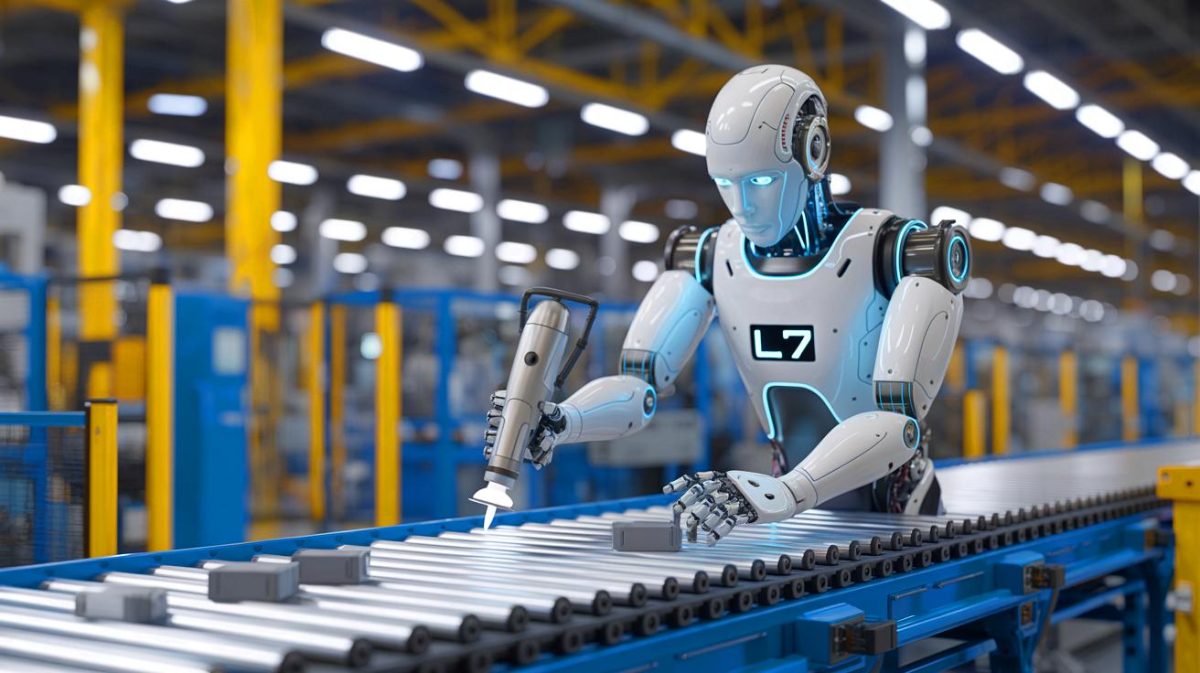| IN A NUTSHELL |
|
In the rapidly evolving landscape of robotics, the recent introduction of the L7 humanoid robot by Chinese startup Robotera has captured widespread attention. This groundbreaking machine boasts unprecedented speed and agility, setting a new standard for humanoid robots worldwide. Capable of reaching speeds up to 9 mph, the L7 is not just fast but also exhibits remarkable dexterity and strength, making it a versatile tool for a wide range of applications. As industries explore the potential of robotics, the L7 stands out as a symbol of innovation, pushing the boundaries of what humanoid robots can achieve in industrial and everyday settings.
Unveiling the Speed Revolution
The L7 humanoid robot has redefined what is possible in terms of robotic mobility. Its innovative design features a “body plus brain” architecture that allows for seamless movement and coordination. This breakthrough has enabled the robot to perform complex actions with ease, such as executing high-energy spins and breakdancing routines. Its ability to maintain balance while performing these tasks highlights its advanced mechanics and stability.
In a demonstration video, the L7 showcases its capabilities in a simulated factory environment, adeptly sorting objects on a conveyor belt and operating power tools with precision. This demonstration not only underscores the robot’s industrial potential but also its ability to perform tasks requiring significant torque sensitivity. The robot’s capacity to run faster than a human further emphasizes its advanced bipedal mobility, making it a promising option for deployment in various physically demanding fields like manufacturing and logistics.
Combining Dexterity and Power
The L7 is an evolution of Robotera’s earlier models, with significant improvements in both agility and upper-limb dexterity. Its ability to sprint at 9 mph and perform precise tasks showcases its versatility. The robot’s 55 degrees of freedom enable swift and powerful movements, allowing it to lift weights up to 44 pounds. This dexterity is complemented by a multi-sensor fusion system that provides a 360-degree spatial awareness, enhancing its situational intelligence.
The L7’s operational efficiency is further supported by a swappable battery system, ensuring uninterrupted performance. Although the exact battery life is unspecified, this feature underscores the robot’s readiness for continuous use. Robotera also offers an upper-body-only version, the M7, which can be upgraded to the full-body L7 model, providing flexibility for research and data collection initiatives. These advancements demonstrate Robotera’s commitment to enhancing humanoid robotics through ongoing innovation.
Versatility Across Industries
The L7’s capabilities extend beyond speed and agility, establishing it as a versatile tool for a variety of industrial applications. Its ability to perform delicate tasks, such as handling paper towels and curtains, demonstrates its adaptability to production floors and service settings. Robotera’s recent achievements, like the STAR1 humanoid skillfully using chopsticks, highlight major strides in robotic dexterity.
Beyond industrial tasks, the L7’s dynamic range allows it to engage in athletic activities, further showcasing its versatility. Its combination of speed, dexterity, and strength positions the L7 as a valuable asset in sectors ranging from manufacturing to logistics and even entertainment. As Robotera continues to innovate, the L7 exemplifies the company’s dedication to advancing the capabilities of humanoid robots.
Looking Ahead: The Future of Robotics
The introduction of the L7 humanoid robot marks a pivotal moment in the robotics industry, opening new avenues for integrating robots into daily life. As these robots become more sophisticated, they hold the promise of transforming industries by performing tasks that demand both precision and strength. The L7’s ability to execute intricate, torque-sensitive operations positions it as a critical asset in manufacturing and logistics, while its adaptability to domestic environments hints at future roles in household assistance and entertainment.
With Robotera at the forefront of robotic innovation, the future of humanoid robots appears promising. As the L7 continues to evolve, new capabilities and applications are likely to emerge. How will humanoid robots like the L7 shape our world in the coming years, and what roles will they assume in transforming industries and our daily lives?
Did you like it? 4.6/5 (23)








Wow, 9 mph? That’s faster than my morning jog! 😅
This robot sounds amazing, but should we be worried about job security?
Can the L7 actually dance better than me at parties? 🕺
Impressive speed and power, but how long before these robots are in our homes?